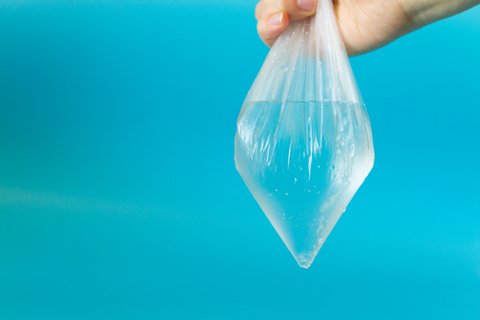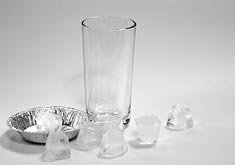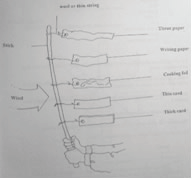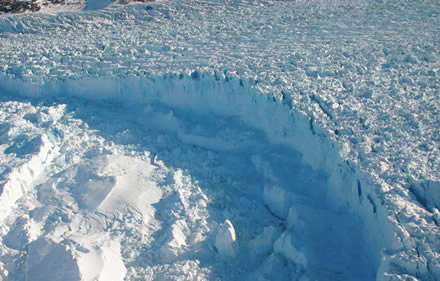Can you turn water upside down?
Learn about air pressure! This is a variation on the classic glass and piece of paper trick.
Equipment
◊ An empty 500ml fizzy drink bottle
◊ Water
◊ A piece of net curtain or similar
◊ An elastic band
◊ Toothpicks
Method
1. Stretch the netting over the top of the bottle and hold in place with the elastic band.
2. Fill the bottle with water right till it’s almost overflowing.
3. Place your hand over the top of the bottle and turn it upside down. Remove your hand – no water should come out!
Try pushing a toothpick through one of the holes in the net. It should go through and rise to the top of the bottle. Try adding some more!
To let the water out of the bottle, just tilt it gently to one side.
What’s going on?
Atmospheric pressure acts in all directions, not just down. In this case the pressure due to the weight of the air above us, pushes up on the water in the bottle and stops it from coming out.
Atmospheric pressure (around 1000mb) can support a column of water about 10.3m high – the depth of
water in the bottle is a lot less than that. A barometer made with water, rather than mercury, would need a column of water 10.3 m high!
How does this relate to the atmosphere?
The large scale circulation of the atmosphere and oceans, and smaller scale weather systems, are all driven by pressure differences. Air, and water, will always tend to move from areas of high pressure to areas of lower pressure.
At any one time the pressure at sea level may vary around the world from as little as 870mb (inside a hurricane) to 1083.8mb (recorded in Siberia, 31st December 1968).
In the UK, the air pressure varies between about 970-1040mb as weather systems pass over. Pressure also falls with height. This is why aeroplanes must have pressurized cabins. At the top of Mount Everest the pressure is only about 330mbar.
More Pressure Related Experiments
1. Get a plastic 1.5ltr lemonade bottle and drink the contents. Then immerse it up to the neck in hot water. Don’t let water get inside. Wait for a couple of minutes while the air inside warms up – this makes some of the air leave the bottle (a partial vacuum). Quickly replace the top and remove from the hot water. Soon the bottle will start to buckle as the air inside cools down and contracts, allowing the outside pressure to act on it. This works with plastic milk bottles too.
2. Use any plastic bottle and a ‘wine saver’ device (they extract the air from opened wine bottles to stop the rest spoiling). Pump out the air and watch the bottle collapse as flat as a pancake!
3. Put a ruler on the table, leaving a bit of it sticking out over the edge. Put a sheet of paper over the ruler, but not over the bit that’s sticking out. Now give a smart hit to the end of the ruler. You should find that it’s quite difficult to make the ruler move. Why? It’s because that sheet of paper has many kilos of air on it, so when you hit that ‘lever’ you’re trying to move much more than a sheet of paper!
4. Put a clean drinking straw in a clear cup of water. Hold a second clean straw next to the first, but with the end outside the cup, and try sucking through both straws at once. Can you suck water up? It is impossible to drink if one of the straws is outside the glass. In order for water to be forced into your mouth, the pressure outside (atmospheric pressure) needs to be greater than the pressure inside your mouth (a partial vacuum), but, with two straws, you suck air up as well and cannot maintain low pressure in your mouth. Now make a small hole with a pin in one of the straws, about 3cm from the top. Can you drink through it? No matter how hard you suck, a straw won’t work if air can get into your mouth and stop you from maintaining low pressure there.
5. Place a well-stretched balloon inside a 1 litre clear plastic bottle and spread its neck over the top of the bottle. Do the same with another bottle and balloon, but, this time, put a small hole in the side of the bottle, near its base. Can you blow up the balloons inside the bottles? It should only be possible with the holey bottle. Quickly put your thumb over the hole when the balloon is inflated, and it should stay inflated when you stop blowing into it. It should also be possible to inflate the balloon by sucking air through the hole in the bottle! Think about where the pressure is the same as, greater or less than atmospheric pressure.



